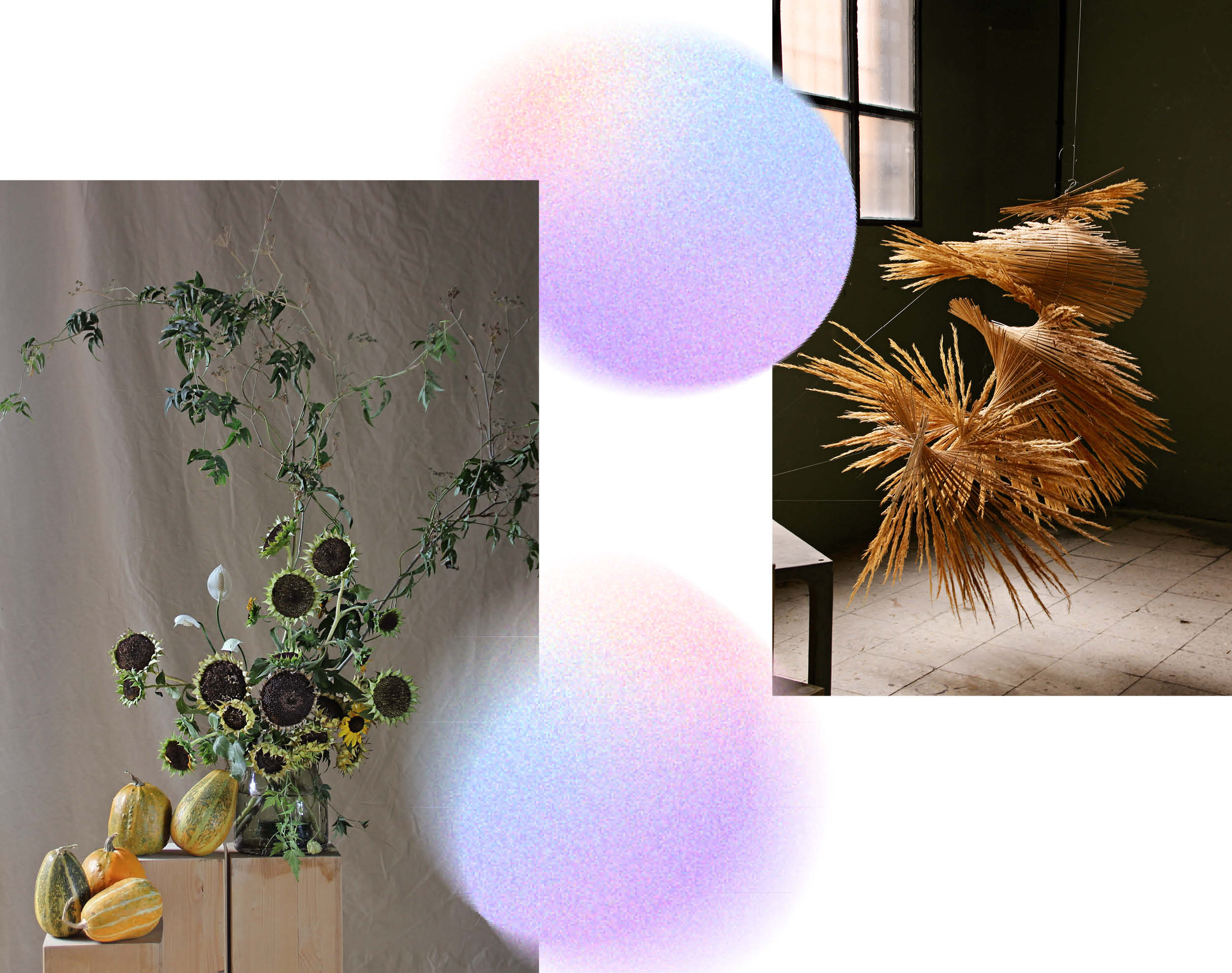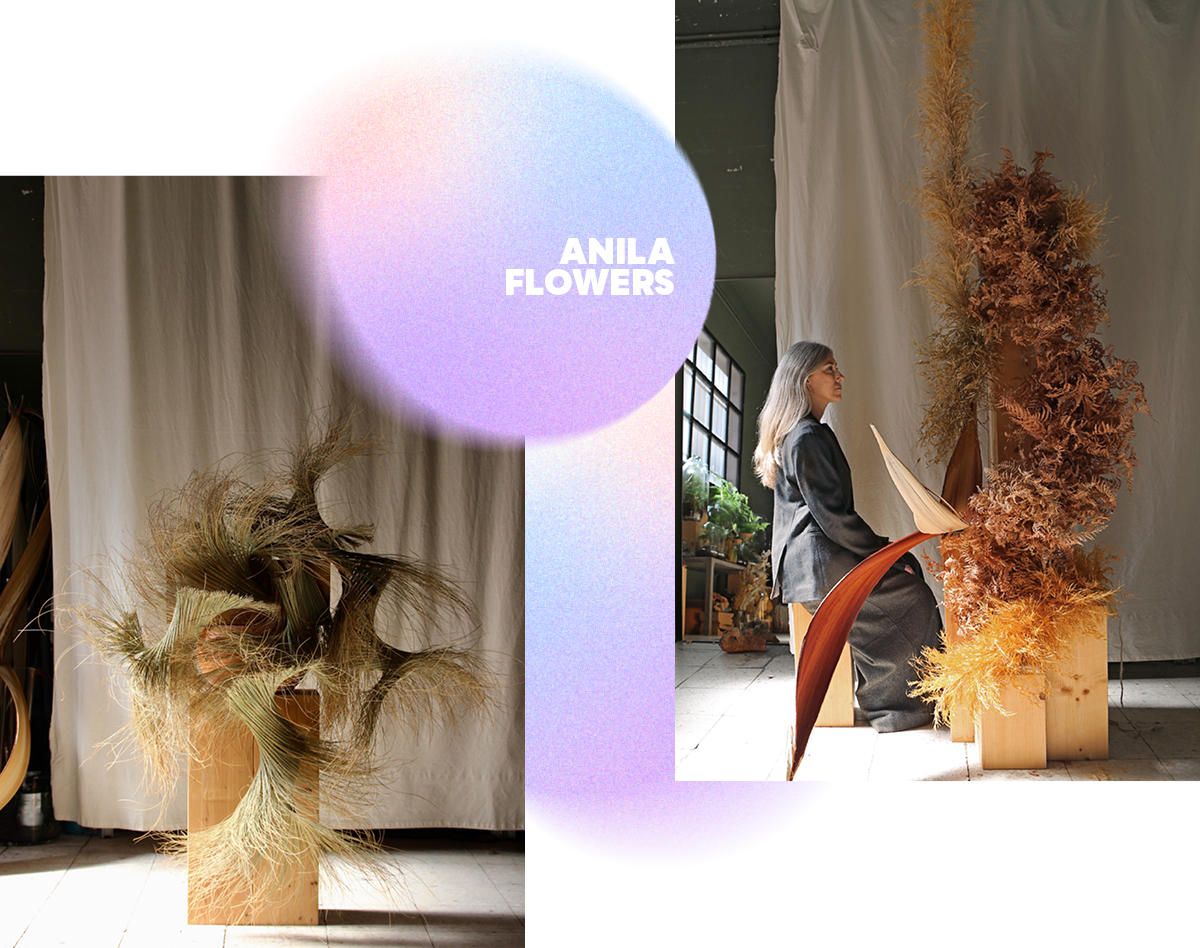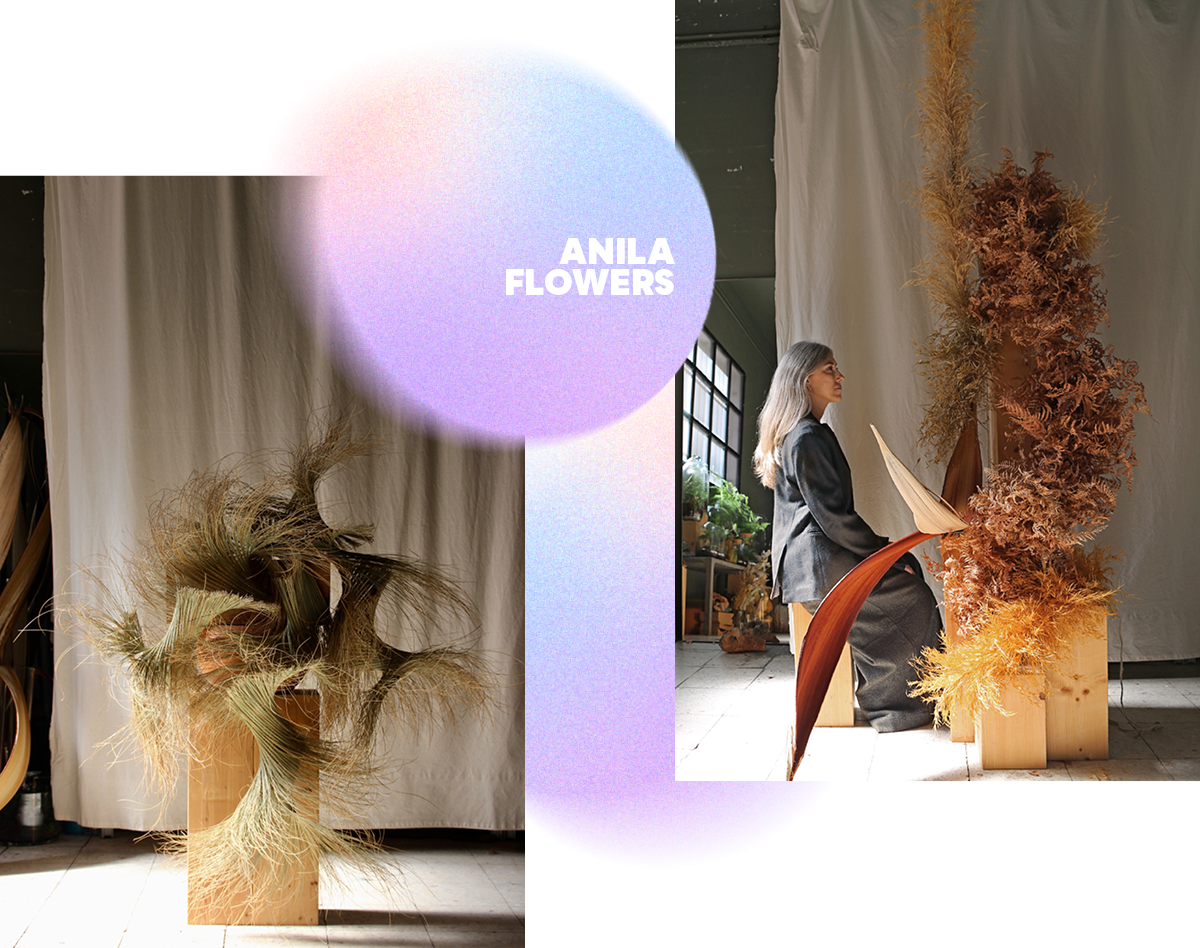Anila Flowers: Bringing the artisan to botanical design.
Madrid Flower School's Anila Flowers Talks Organic Artistry in the Run-Up to MADRID BLOOMS.
What inspired you to enter the world of flower design?
I didn’t set out to be a floral designer; my initial interest was in growing and working with materials. I had no references, and nothing I saw appealed to me. But I remember one particular night—one of those when I came home exhausted from work and started browsing the internet. Suddenly, an arrangement by Ariella Chezar appeared, and it changed everything. It was unmistakably Ariella’s style, in soft tones. I can’t remember the exact flowers, what I do remember are the small fruits she included—apricots and cherries... Thanks to that arrangement, I realized it wasn’t just about flowers, there were other materials that could bring something new to the design. From there, I started researching and discovered that Ariella Chezar taught classes in New York. I began following all the florists working in that area, in Brooklyn, like Saipua, and it opened my eyes to the garden-style world. I followed everything Sarah wrote on her blog and Ariella’s work. Then I came across Emily Thompson’s arrangements and thought, What is this? I was fascinated by the use of materials—not just flowers, but elements I wasn’t used to seeing.
How did you start working as a floral designer?
In 2010, I went to New York for a while to study. I didn’t tell anyone except my family and a few close friends. I had a map of New York with the flower shops I wanted to visit marked on it, Emily Thompson, Saipua... and I went for two weeks. When I returned to Madrid, I left my job and went back to New York to do the full course. When I returned to Spain, I started from home. I began collaborating with people here, making small arrangements on commission and working on arrangements, but taking it slow. I wanted to work in places I liked, so I’d offer my designs. Not everyone was interested. One of these places was a shop where I bought clothes, a space I loved because it combined flowers, decor, talks, and exhibitions. I went, talked to the owner, and she liked the idea. I made an arrangement for the display window, with material I gathered from the countryside, and it looked great. We started collaborating: I created installations with plants and collected elements, and even taught courses there. Later, when she closed her store and found the space we work in now, she asked if I’d like to share it, and I was thrilled.
What’s your signature when designing with flowers?
What I love is adding something unexpected, whether it's in the flowers or the non-floral materials. I remember in my first bridal bouquet, I found out that the bride's grandmother loved this very Andalusian flower called Celindo, so I tucked it in among the other flowers. I always like to include a surprise. When I worked more with flowers, I loved mixing something exotic with something more classic. But now, for me, the search for materials is the part I find most interesting and fun. I think that’s where I can bring something new. I love experimenting with different materials.
Who or what are your main sources of inspiration?
Like all designers, my style has evolved over time. Your eye gets used to certain things, and you discover people who inspire you. I started with that arrangement by Ariella—everything she does revolves around the material, it's not just putting flowers together. That really stuck with me. When I got back from New York, I was used to working with incredible flowers, like the dahlias from Ariella's class... I’ve never seen anything like them again. When I was practicing, I couldn’t spend that much money on flowers, so I would go to the countryside, to Málaga, and pick what I could find there.
And what inspires you now?
These days, I get a lot of inspiration from florists from Asia, like This Humid House and Leo King. Many of them have a background in Ikebana. A simple piece of earth can be an arrangement, and I find that amazing. It says so much with so little. A piece of clay with roots is beautiful. Not everyone likes it, though. Sometimes, we need a little help. Placing it in a space, with the right background and light, helps people see it. When I’m out in the field and I see stones, sometimes you just need to shine a special light on it, put it on a base, to make people stop and notice it. What I want is for people to stop and think, What’s that? Like esparto grass, it goes unnoticed. My village is full of esparto, and the first spiral I ever made was from it. Yes, I would say it’s the material that inspires me now.

"A simple piece of earth can be an arrangement, and I find that amazing. It says so much with so little."
What has been the most significant lesson in your career?
Are there any emerging trends or innovative techniques that you find particularly exciting?
It's not just about techniques within the floral world; sometimes it's necessary to draw from other disciplines, both craft-based and artistic. For example, I find basketry really interesting, I'm thinking about how I can incorporate it into the floral world. I believe trends are very personal; it’s about sensitivity. My sensitivity is very much focused on botanical materials. To me, trends are different—like when someone picks up a piece of clay with roots, I find that wonderful. A well-placed trunk—this is what inspires me. Anything that makes authentic, pure use of the material.ç
What sustainable practices do you incorporate into your daily work as a floral designer?
I try to make the most of what I have. Last year, I created an installation using branches from a tree that had been pruned by a man in Segovia. It happened almost by chance—I was heading to Segovia and thought, "I need to collect branches," and this man just happened to have beautiful ones. I also picked up leaves from a gardener’s trash bag. It’s about using what’s available. When I cut things, I have to act quickly; they’re usually the ones pruned to prevent fires. I never cut anything delicate. And I use them multiple times. Right now, my dad has a lot of pumpkins—not just for Halloween, but because that’s what I have at the moment. In my village, there’s esparto, so I use that too.
What do you want people to feel when they see your work?
I can tell you what I want when I design. As you’ve probably noticed, the light tones I use are very soft—at home, I hardly have any direct light, everything is indirect. What I try to achieve is to induce relaxation, a moment of contemplation. I want people to pause, to feel the pace slow down. For me, what I create is relaxing, introspective, meditative. It’s like slowing down time. I want to create a moment of peace, not an intense burst of excitement. When I work, I don’t use artificial light; I prefer natural light—it’s what relaxes me. That’s why, when I take photos, I always use only natural light, which is indirect, warm, yellow... and simply beautiful.


